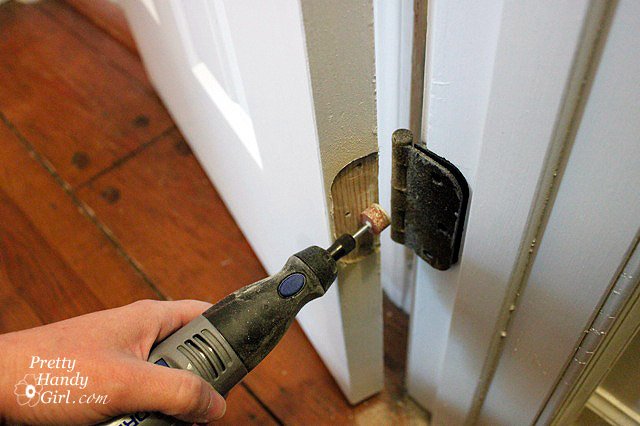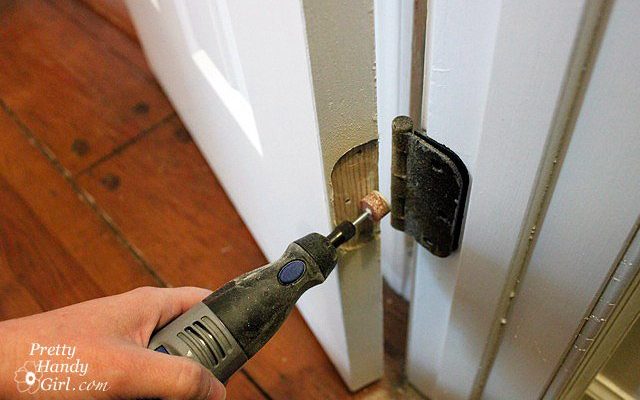
Let’s dive into the world of door hardware. Whether you’re an avid DIY-er or just someone looking to fix a door in your home, grasping the nuances of non-standard framing can be incredibly helpful. We’ll explore various aspects, from identifying the type of door you’re dealing with to practical solutions for installation and adjustments.
Understanding Non-Standard Door Framing
Non-standard door framing refers to door setups that don’t conform to the typical measurements and designs most people know. This means the structure might be too wide, too narrow, or simply quirky in shape. Think of it like a puzzle piece that doesn’t quite fit into the overall picture.
Why does this matter? Well, hardware—like locks, hinges, and handles—often relies on specific dimensions. If your door frame is odd, these hardware pieces may not align properly. When you get down to the nitty-gritty, you might find that the hardware you purchased doesn’t work as intended, leading to a frustrating installation process.
Here’s the thing: before we troubleshoot, it’s essential to understand what you’re working with. Are you dealing with a residential door, a commercial entry, or perhaps a custom-built piece? Each type has its own quirks, and knowing what to expect can make your task a whole lot easier.
Common Issues You Might Encounter
Let’s talk about the typical problems that pop up when dealing with doors that lack standard framing. One of the most common issues is misalignment. If the door doesn’t sit properly within the frame, you might struggle with closing it smoothly or achieving a tight seal. This can lead to drafts or security concerns—definitely not what you want!
Another thing to watch out for is the size of the hardware. For example, if you’ve got an oversized door, standard hinges may not be sufficient to support the weight. This could result in sagging, impacting how well the door functions. You might also notice that standard locks don’t match up with the pre-drilled holes, widening the frustration gap even further.
Finally, there’s the challenge of aesthetics. A mismatched handle or lock can ruin the look of your door. If you’re investing time and effort into a fix, it’s worth considering hardware that complements your door’s style.
Measuring Your Door Frame
Before you rush off to buy new hardware, take a step back and measure your door frame. Grab a tape measure and note the width, height, and thickness of the door. You’ll also want to check the depth of the frame—it’s easy to overlook!
To measure, here’s a simple guide:
- Width: Measure from one side of the door frame to the other at the top, middle, and bottom. Use the smallest measurement.
- Height: Measure from the top of the frame to the floor on both the left and right sides. Again, go with the smaller height.
- Thickness: This might be the most straightforward measurement. Just measure the door from edge to edge.
You might be wondering why these numbers matter. Well, having accurate measurements helps when you’re selecting hardware. You’ll be able to choose pieces that fit correctly and function as intended.
Selecting the Right Hardware for Your Door
Now that you’ve got your measurements, it’s time to select the right hardware. This can be a game-changer when you’re troubleshooting hardware on doors without standard framing.
For non-standard doors, consider the following options:
- Custom Hardware: If your door is truly unique, custom hardware may be the best way to go. This ensures a perfect fit and functionality.
- Adjustable Hardware: Many brands offer adjustable hinges and locks that can fit a range of door sizes. This flexibility can solve misalignment issues.
- Universal Kits: These kits often come with various components and may include extra pieces to accommodate different measurements.
When selecting hardware, think about what’s most important to you. Is it the ease of installation? The aesthetic appeal? Or perhaps the functionality? Understanding your priorities will guide your hardware choices.
Installing Hardware on Non-Standard Doors
Installation is where the rubber meets the road. Once you have your hardware, it’s crucial to install it correctly. Start by aligning your first piece—often the hinge—according to the manufacturer’s instructions. Make sure that everything is level; a slight tilt can cause major issues later.
Here’s a step-by-step to help you with the installation of a hinge:
1. Mark Your Placement: Use a pencil to mark where your hinge will go. Make sure it’s even and aligns with the door frame.
2. Pre-Drill Holes: To avoid splitting the wood, drill pilot holes where you’ve marked.
3. Attach the Hinge: Using screws, attach the hinge and ensure it’s secure but not over-tightened.
4. Test the Door: Before proceeding, swing the door open and closed to make sure it moves smoothly.
If you run into problems during installation, don’t hesitate to loosen the screws slightly. This will allow you to reposition the hardware for a better fit.
Adjusting Hardware for Better Fit
Sometimes, even after you think you’ve nailed the installation, adjustments are still needed. Don’t worry; this is common, especially with non-standard doors.
To adjust hardware, start by checking for any loose screws. Often, a simple tightening can solve a lot of issues. If the door is still misaligned, you can try these techniques:
- Shimming: If a hinge side is slightly tilted, add a shim—like a thin piece of wood—behind the hinge to raise the door.
- Repositioning: For locks and handles, you might need to reposition them closer together or further apart based on your previous measurements.
- Replacing Hardware: If you’re still having issues, sometimes it’s best to step back and consider whether the hardware you chose is truly compatible or if you need a better option.
Adjusting can sometimes feel like trial and error, but patience is key here. Take your time and test the door after each adjustment.
Maintaining Your Hardware
Once your door hardware is finally installed and adjusted, maintaining it is essential. The better care you take, the longer it will last.
Start by checking your hardware frequently. Look for signs of wear, especially if your door is used often. Here are some maintenance tips:
- Lubrication: Apply a lubricant to hinges and locks every few months to keep them functioning smoothly.
- Tightening Screws: Regularly check screws to ensure they don’t loosen over time; this can help prevent misalignment.
- Cleaning: Dust and dirt can build up around hardware, so clean it periodically to avoid build-up that can hinder functionality.
Honestly, a little routine maintenance goes a long way in ensuring that your door hardware works properly.
In summary, troubleshooting hardware on doors that lack standard framing can be a challenge, but it’s certainly manageable with the right approach. By understanding your door, selecting the appropriate hardware, measuring carefully, and maintaining it well, you can enjoy smooth operations and a door that functions as intended. So next time you face a non-standard door, remember these tips, and tackle the task with confidence!
